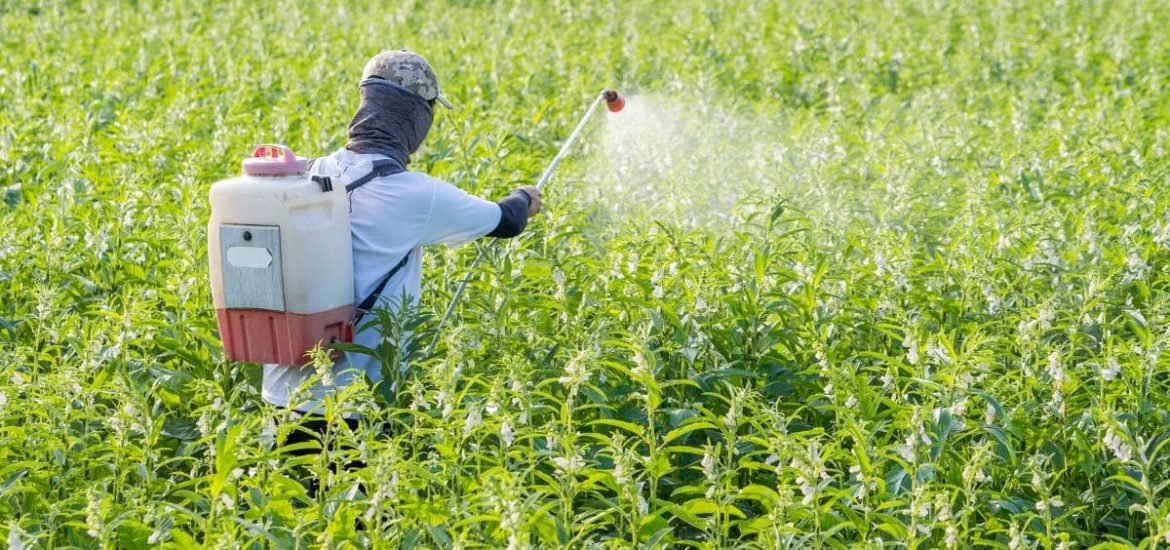
Identifying optimal crop rotation strategies could improve long-term yields and reduce pesticide use, according to a new paper published on 16 January in PLOS Computational Biology (1). The authors used a computational model to show how crop rotation patterns can be used to tackle plant pathogens.
This new approach could help develop more sustainable strategies for increased food production, to address the need for more efficient agriculture in order to feed the ever-increasing global population.
Why is crop rotation so important?
Crop rotation, which has been used thousands of years, is the practice of growing different types of crops (or none at all) on the same area of land year after year – and is an important component of sustainable agriculture systems.
Effective crop rotation can break pest cycles and add extra nutrients to the soil. This reduces the need for pesticides and fertilisers, bringing food systems one step closer to the so-called holy grail: cereal crops that don’t require pesticide, biocontrol, or fertiliser use.
Crop rotation strategies to control pathogens
The researchers Maria Bargués-Ribera and Chaitanya Gokhale of the Max Planck Institute for Evolutionary Biology in Germany used a computational model based on evolutionary theory to determine which patterns of crop rotation maximize crop yield.
The study focused on one particular benefit of crop rotation: pathogen control. In particular, the authors looked at different rotation scenarios for a cash crop (grown for profit) and cover crop (benefit the soil) considering a pathogen that only attacks the cash crop.
The model successfully identified the patterns of crop rotation that can maximise crop yield. But interestingly, the findings suggest that yearly crop rotations may not be optimal. Furthermore, they discovered that long-term outcomes mainly depend on the soil quality and pathogen load during harvesting seasons.
The new model could also be used to assess crop rotation patterns for specific crops and pathogens, or combined with other pest control techniques.
In a statement, Bargués-Ribera said: “Our model is an example of how evolutionary theory can complement farmers’ knowledge. In a world with ever-increasing food demand, ecological and evolutionary principles can be leveraged to design strategies making agriculture efficient and sustainable.”
The benefits of diverse crop rotation
The benefits of diverse crop rotation strategies
Biodiversity provides ecosystem services such as pollination, pest control, soil formation and maintenance, carbon sequestration, purification and regulation of water supplies, as well as reducing the threat of natural disasters and providing habitats for beneficial species.
Other studies have shown that planting a variety of crop species in rotation — so-called diverse crop rotation — can benefit the soil by improving soil fertility and increasing soil microbial biodiversity (2).
Unfortunately, the global shift towards a small number of high-value crop species and lineages that now dominate agricultural land around the world is bad news for sustainability. Yet, the practice of monoculture ― cultivating a single crop within a given area ― is, in fact, growing and now dominates global food industries: the same commercially valuable crops, such as soybeans, wheat, rice, and corn, are grown across Asia, Europe, North, and South America.
The increasing dominance of just a few crop lineages will also increase the susceptibility of these crops to pests or diseases, which could seriously undermine the resilience of global food systems.
Despite measures to control pathogens, some may still thrive. And just like superbugs that have adapted to resist multiple antibiotics and now pose a serious threat to human health, plant pathogens can also evolve, potentially placing agricultural systems worldwide at risk.
For instance, a deadly pathogen could potentially knock out an entire global agricultural system. Thus, strategies should also be implemented to promote diversification.
(1) Bargués-Ribera and Gokhale, C.S. Eco-evolutionary agriculture: Host-pathogen dynamics in crop rotations. PLOS Computational Biology (2020) DOI: 10.1371/journal.pcbi.1007546
(2) Tiemann, L.K. et al. Crop rotational diversity enhances belowground communities and functions in an agroecosystem. Ecology Letters. DOI: 10.1111/ele.12453
I read the above article and got some knowledge from your article which is about Crop Rotation – Principles and Benefits | Types of Crop Rotation It’s actually great and useful data for us. Thanks for sharing it.